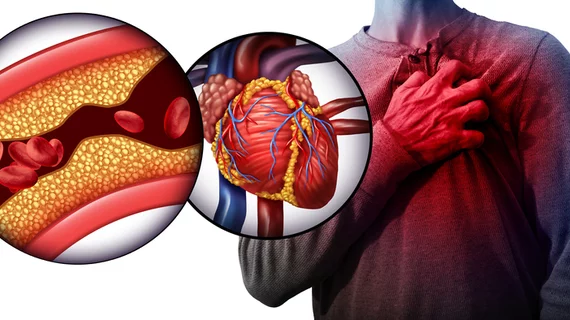COVID-19 linked to accelerated plaque growth, long-term risk of heart attack or stroke
The virus responsible for COVID-19 is associated with several long-term heart risks, according to a new analysis published in Radiology.[1] This appears to be true regardless of the patient’s age or health at the time of infection.
“COVID-19, caused by SARS-CoV-2, is initially characterized by acute lung injury and respiratory failure,” senior author Junbo Ge, MD, director of the cardiology department at Zhongshan Hospital in Shanghai, China, said in a statement. “However, emerging evidence indicates COVID-19 also involves an extreme inflammatory response that can affect the cardiovascular system.”
Ge et al. examined coronary CT angiography (CCTA) data from more than 800 patients with a mean age of nearly 64 years old. More than 67% of patients were men. While 41% of patients underwent CCTA prior to the COVID-19 pandemic, the remaining patients underwent CCTA during the pandemic. One in four of patients imaged during the pandemic presented with an active SARS-CoV-2 infection. All patients underwent baseline and follow-up measurements over time, allowing researchers to follow different trends over time.
Overall, after reviewing more than 2,500 coronary artery lesions, the group determined that plaque volumes grew much faster in SARS-CoV-2 patients. High-risk plaques (20.1% vs. 15.8%), coronary inflammation (27% vs. 19.9%) and target lesion failure were also significantly more common in patients infected with SARS-CoV-2.
“Inflammation following COVID-19 can lead to ongoing plaque growth, particularly in high-risk, noncalcified plaques.” Ge said in the same statement. “Patients with SARS-CoV-2 infection are at increased risk for myocardial infarction, acute coronary syndrome and stroke for up to a year.”
There is still much to learn about how SARS-CoV-2 can impact a patient’s heart health, but these finding suggest anyone infected could feeling the effects for years to come.
“It’s crucial to anticipate a heavier cardiovascular patient burden in the future as most infected individuals recover from acute SARS-CoV-2 infection,” Ge said.
Click here to read the full study in Radiology, a Radiological Society of North America journal.

